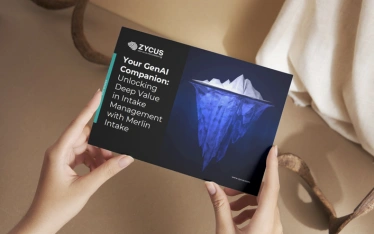Maintaining good supplier performance is critical to the success of your business. A poorly performing supplier can impact your bottom line, and may even put your company at risk. That’s why it’s important to perform regular evaluations of your suppliers. In this blog post, we will provide you with a quick Supplier Performance Evaluation Checklist to help you evaluate supplier performance.
Key Takeaways:
- Supplier performance evaluation helps mitigate risks and ensures that suppliers meet your quality, cost, and delivery expectations.
- Regular evaluations allow businesses to detect potential issues early and take corrective action before they impact operations.
- Structured evaluations can drive continuous improvements in supplier relationships, optimizing the overall supply chain.
What is a Supplier Evaluation?
A supplier evaluation is a process in which you measure and monitor the performance of your suppliers, often using supply chain performance indicators. This can be done regularly, such as quarterly or annually, and should include a review of the supplier’s financial stability, quality of products or services, delivery times, and customer service. Having a clear understanding of your needs and expectations before conducting an evaluation ensures that you can identify any areas where the supplier may be falling short.
Why is Supplier Evaluation Important?
Supplier evaluations are important because they help you to ensure that your suppliers are meeting your standards and requirements. They also allow you to identify any potential problems that could impact your business. By conducting regular evaluations, you can make sure that your suppliers are performing at their best, and take action to correct any problems.
Organizations with a global footprint, find managing a supplier base and corresponding sets of varying business rules quite tricky. It is critical to have a robust supplier evaluation criteria or plan for internal and external accountability and justification for a continuing relationship.
Download the Whitepaper: A Quick and Effective Guide to Supplier Performance Evaluation Criteria
Depending on the context, a concrete supplier evaluation plan can help you in scenarios like:
- Planning to go for a repeat purchase
- Choosing the best supplier among a pool of ‘good’ suppliers within a category
- Weeding out poorly performing suppliers and replacing them with better ones
- Initiating a regular cost-benefit analysis practice
Measuring and evaluating supplier performance is paramount to a reduction in costs, increased process efficiency, and business performance. They help prevent product issues and post-payment defects and drive improvements in the supplier management strategies.
Read Our Whitepaper- Supplier Risk And Performance Management: Best Practices For KPI Creation
Benefits of Conducting a Supplier Evaluation
There are many benefits to conducting a supplier evaluation. Some of the most important benefits include:
- Enhanced Supply Chain Efficiency: Evaluations help in identifying bottlenecks or inefficiencies, enabling you to streamline procurement processes.
- Cost Savings: Regular assessments can reveal hidden costs associated with poor supplier performance, leading to better financial control.
- Risk Mitigation: Supplier evaluations are essential for identifying suppliers that may pose risks to your business, allowing you to implement contingency plans.
- Improved Supplier Relationships: A transparent evaluation process fosters collaboration, helping suppliers understand how they can improve and better meet your expectations.
Conducting a regular evaluation can help you to identify any problems early on and take corrective action before they impact your bottom line. Supplier evaluations are an important part of supply chain management, and can help you to ensure that your business is getting the best possible products and services.
Press release – Get the key to enhance the Sourcing and Supplier relationships
Supplier Evaluation Criteria
Depending on the context, concrete supplier evaluation criteria can help you in scenarios like:
- Planning to go for a repeat purchase
- Choosing the best supplier among a pool of ‘good’ suppliers within a category
- Weeding out poorly performing suppliers and replacing them with better ones
- Initiating a regular cost-benefit analysis practice
Measuring and evaluating supplier performance is vital for a reduction in costs, increased process efficiency, and business performance. They help prevent product issues and post-payment defects and drive improvements in the supply chain.
Your Handy Supplier Performance Evaluation Checklist
Step 1: Establishing Performance Indicators
First of all, one should create an actionable supplier evaluation to finalize broad and detailed parameters. Without this, the steps that follow are meaningless or in a worse scenario, could reflect wrong insights counter-productive to your business. Here are some must-include parameters in your Supplier KPI checklist:
1. Price: Because negotiations can make or break deals with suppliers, it is crucial to monitor key performance indicators for supply chain management during the process. With economies of scale, your organization can create a win-win situation with vendors willing to lower their prices. This allows you to capitalize on large or recurring deals. Additionally, closely track how consistently a supplier adheres to its estimates—if additional charges, unanticipated taxes, or surprise costs are frequent, it’s a clear red flag against the supplier in question.
2. Cost: Another aspect is cost (monetary and non-monetary) borne by your organization when dealing with suppliers. While the major component is the price of the procured goods or services, others include peripheral costs associated with delivery, movement, packaging, and disposal.
3. Quantity: A comparison between quantities ordered versus received is also a consideration. Sometimes, suppliers send an ASN (Advanced Shipment Notice) confirming and explaining anomalies in the delivery.
4. Quality: Inspection checks help detect any visible product defects, rejections, and returns, etc.
5. Service: Some indicators of service excellence include response times for resolving issues, and constant client satisfaction engagement.
6. Delivery: Timelines for the order process and pre-delivery waiting period directly related to your satisfaction with the supplier.
7. Payment terms: Agile payment methods and terms offer payment flexibility to sourcing organizations, much more preferable than a rigid payment process.
8. Certifications: Industry and domain-specific certifications don’t just check off another box. They ensure a level of trust and threshold of minimum quality expectation from the concerned supplier.
9. Value additions: Value additions may seem like rare delights from most suppliers. For some, value addition is built-in. These may deal with a resolution to issues and conflicts, response times, reactions to order revisions, etc.
10. Innovation: A supplier that innovates in various aspects of their offerings trumps others who don’t believe in the long run.
11. Financial health: Healthy finance equips suppliers to serve better, innovate better, and be more adjusting to longer payment cycles.
12. Compliance: Some forms to check are tax compliance, regulatory compliance, and contract compliance. There are also other regional and more specific domain-related requirements.
Our Solution: Supplier Management Software
Step 2: Classifying Suppliers
To start comparing suppliers, start with classifying them into buckets of similar categories. One way to do this is by geography, and another way is by product types.
Step 3: Centralizing and Integrating Data
20% of suppliers usually result in 80% of business needs. However, your organization might have hundreds or thousands of suppliers across various functions. Bring all of them on one centralized portal. Consequently, a supplier evaluation tool like iPerform works very well for this.
Step 4: Develop a Solid Evaluation Approach
Above all, to develop a solid evaluation approach, start with selecting a period, and then move on to the method of evaluation. Few examples include:
- Supplier Scorecards: A balanced scorecard approach can be used to evaluate multiple aspects of a supplier’s performance in a quantifiable way.
- Contract Management: Evaluate suppliers based on compliance with contractual terms and conditions.
- Six Sigma: Implement Six Sigma methodologies to identify areas of improvement and ensure quality control.
Step 5: Collaborating with Suppliers for Review Feedback
Not all assessments need to be quantitative. Instead, constant supplier-buyer collaboration can, at times bring out the bottlenecks much more visibly. While it is essential to conduct regular meetings, it’s also essential to pay attention to the opposite team. Due to feedback conversations, many roadblocks are eliminated.
Step 6: Creating an Actionable Plan
Finally, it is time to create a feasible and actionable plan with ways of action for individual supplier relationships. Also, it is necessary to ensure action against your findings to ensure closing the loop on your evaluation efforts. Supplier performance, when done the right manner through the optimum combination of people, processes, and technology, work wonders. Furthermore, it helps identify performance gaps and devise strategies to plug them.
Therefore, for a more detailed account of this checklist, and further commentary on emerging technologies for supplier evaluation.
Download Our Whitepaper- ‘A Quick and Effective Guide To Evaluating Supplier Performance’
Supplier Evaluation Approaches and Methods
Once you have decided to conduct a supplier evaluation criteria, it is important to choose the right approach and method. There are many different ways to evaluate supplier performance. Some companies choose to use a Supplier Scorecard, which rates suppliers on a scale of 0-100. Other companies may prefer to use a more qualitative approach, such as conducting interviews with customers or employees.
The most important thing is that you select an approach that best meets the needs of your company. You should also consider the resources available to you when making your decision. If you don’t have the time or manpower to conduct in-depth interviews, then a Supplier Scorecard, focused on key performance indicators for supply chain management, may be the best option for you.
Download our White paper- Walking the Extra Mile: Procurement Greets Finance
Supplier Evaluation Tips
Here are some tips to help you conduct a successful supplier evaluation:
1. Set clear objectives: Before you begin, it is important to set clear objectives for the evaluation. What do you hope to achieve?
2. Identify your criteria: Once you have set your objectives, you need to identify the criteria that will be used to evaluate suppliers. This can include quality, delivery times, customer service, etc.
3. Collect data: You will need to collect data from various sources in order to assess supplier performance. This can include financial statements, customer surveys, employee interviews, etc.
4. Analyze data: Once you have collected all of the necessary data, it’s time to analyze it. This will help you to identify any areas where the supplier may be falling short.
5. Take action: Based on your findings, you may need to take action to improve supplier performance. This could include renegotiating contracts, changing suppliers, or implementing new procedures. By following these tips, you can be sure that your supplier evaluation is conducted effectively and efficiently.
Download Our Whitepaper and Explore in-depth about- Supplier Performance Evaluation for Better Results
Supplier Performance Evaluation Template
To assist you in evaluating supplier assessment, download our Supplier Performance Evaluation Checklist. This supplier performance evaluation template provides a comprehensive list of parameters and criteria like pricing, quality, delivery, customer service, and capabilities to consider when assessing supplier performance.
It also provides a quantitative way to rate supplier performance across critical factors. The findings can be used to inform future business and supplier management decisions.
How to Ensure a Successful Supplier Evaluation
There are a few key steps that you can take to ensure that your supplier evaluation is conducted effectively and efficiently. Some of the most important steps include:
- Define your objectives and requirements.
- Identify the Suppliers you will evaluate.
- Collect data and information on Suppliers.
- Analyze Supplier performance.
- Take action based on findings.
How Zycus Solutions Enhance Supplier Management: Real-World Examples
Supplier performance evaluation becomes far more effective with the right technology. Zycus offers a comprehensive suite of supplier management tools that streamline the evaluation process and optimize performance management. Here is a real-world example that illustrates the value of Zycus solutions:
Leading Communication Services Provider
A major communication services provider faced inefficiencies and compliance challenges due to legacy systems. By adopting Zycus’s Source-to-Contract (S2C) solution, which included request management, contract management, and supplier performance evaluation, the company reduced its request cycle time by 70% and saw a 28% improvement in supplier performance scores. This not only enhanced procurement efficiency but also improved compliance across the board.
By following these tips, you can be sure that your supplier evaluation is conducted effectively and efficiently. Supplier evaluations are an important part of supply chain management, and can help you to ensure that your business is getting the best possible products and services. By taking the time to conduct a regular evaluation, you can identify any problems early on and take corrective action before they impact your bottom line.
Request demo and learn more about iPerform within the Zycus Supplier Management solution and get started with better performance management in no time!
FAQs
1. What is the primary objective of supplier performance evaluation?
The primary objective is to ensure that suppliers consistently meet or exceed the quality and performance standards set by your organization.
2. Which key metrics should be tracked when evaluating a supplier’s performance?
Key metrics include delivery times, quality of goods, communication efficiency, cost management, and compliance with contractual agreements.
3. How often should supplier performance evaluations be conducted?
Supplier performance evaluations should be conducted regularly, such as quarterly or annually, depending on the criticality and complexity of the supplier relationship.
4. Why is it important to include a feedback mechanism in supplier evaluations?
Including a feedback mechanism helps in identifying areas for improvement, fostering better supplier relationships, and ensuring continuous quality improvement.
5. What role does risk management play in supplier performance evaluations?
Risk management is crucial for identifying potential disruptions and ensuring that contingency plans are in place to mitigate any negative impact on the supply chain.
Related Read:
- Supplier Performance Measurement: Keeping It Simple But Actionable
- Supplier Management–Benefits, Process, & Best Practices
- The Supplier Information & Performance Dossier (part 4): Supplier Performance Management
- Vendor Management 101: Best Practices and Key Considerations
- Supplier Relationship Management: A Comprehensive Guide
- White Paper – Essential Components of a World-Class Supplier Performance Management Tool : A MENA Perspective
- White Paper – Supplier Risk And Performance Management: Best Practices For KPI Creation
- Press release – Global BPO Provider Based in the UK, Partners with Zycus for Source-to-Pay Procurement Transformation
- Solution: Supplier Management Software
- Solution: Procurement Software for Automotive Industry









